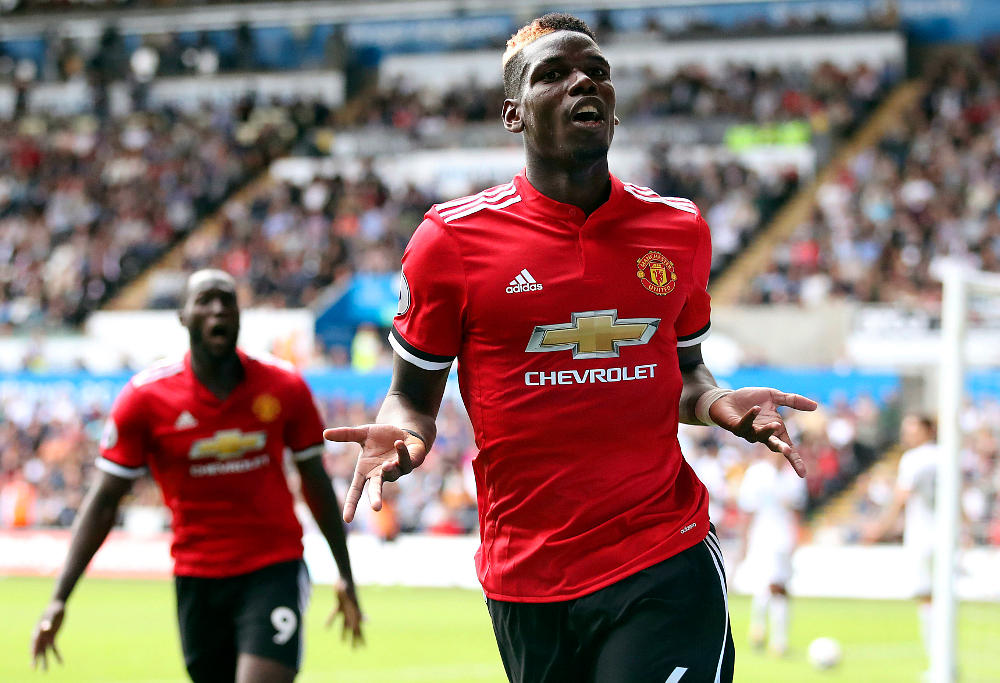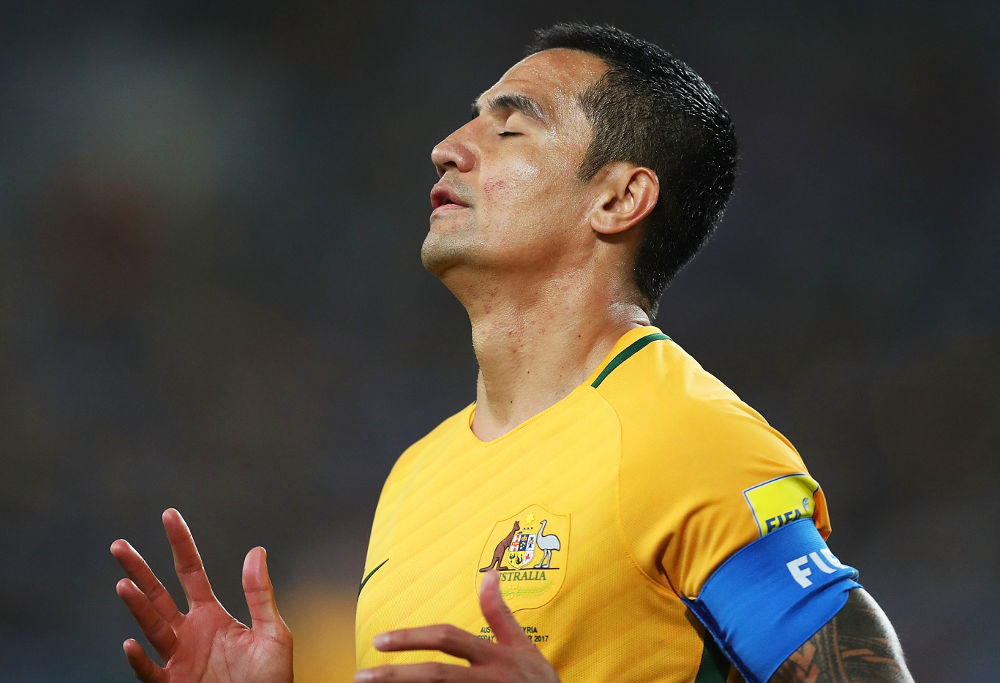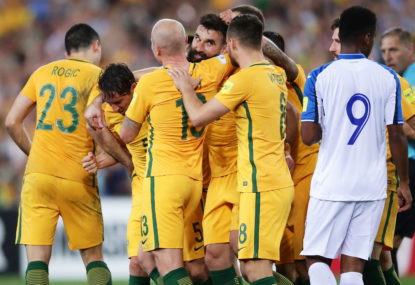What’s the right Socceroos formation? 3-5-2 is the Socceroos current formation, the same one used at Premier League champs Chelsea.
This version, instead of having two straight out centre-forwards, Chelsea and Australia have one who plays deeper than the other. With Chelsea, Alvaro Morata goes deep, playing as a target man and Eden Hazard does the playmaking.
The only difference with Chelsea’s and Australia’s formation is that instead of having two central defensive midfielders and an attacking midfielder (Cesc Fabregas), Australia play with a defensive midfielder (Mile Jedinak or Mark Milligan) and two central midfielders.
This creates a diamond, with Jedinak or Milligan quickly passing the ball to Mooy, Luongo or anyone else who plays as a central midfielder. Then the central midfielders will pass the ball to the second striker/playmaker Tommy Rogic or Jackson Irvine.
More FIFA World Cup
» World Cup news
» World Cup fixtures
» World Cup squads
» How to live stream the World Cup
» Australian World Cup TV guide
» World Cup history
It will be difficult for the three at the back to defend against France with quality attackers, Antoine Griezmann, Kingsley Coman, Anthony Martial, Kylian Mbappe, Olivier Giroud, Dimitri Payet and Gameiro.
They will most likely play four out of the seven, and their usual formation, 4-2-3-1. The defensive midfielder is very important because it can drop deep and when there are defensive issues, the defensive midfielder can play as a centre back for the duration, making the left and right centre back play as full backs.
Mark Milligan is also familiar playing as a defender, centre or right back.
The central midfield to the second striker may not work against France, because as some say, even if Australia had the possession, it would be increasingly difficult to get the ball to the striker especially with the quality defensive midfielders Tiémoué Bakayoko, Paul Pogba, N’Golo Kanté and Blaise Matuidi.

They are some of the best interceptors and tacklers in the world, and they are quick to move the ball forward.
Also, injured second striker Rogic may simply not cause enough defensive problems against the French. He does play for Celtic and shows glimpses of class, but occasionally is very quiet, especially in the Japan game.
Rogic being lively will be very important for the Socceroos, but it is hard to see that happening, especially against an experienced French defence that is very hard to penetrate. In addition to this, the one up front occasionally lacks quality.
Tomi Juric and Tim Cahill are both inconsistent, with Nikita Rukavytsya more of a winger than a striker. Surprisingly, the 30-year-old has been scoring in the Israeli league, scoring four out of the club’s six goals.
But don’t get too carried away, it’s Israel and Rukavytsya’s team only scores an average of a goal a match. Overall, he’s scored six goals in 18 appearances.
Having only two people on the flank will make it very difficult to defend against the wingers and the full backs who might push up, but also, they will have a hard time attacking against four players.
This could result in the two central midfielders actually having to go out wide and defend against the two wingers, almost mimicking Australia’s old 3-3-3-1 used in the 2006 World Cup by Guss Hiddink.
Here was that formation used against Brazil, which Australia lost 2-0, with a goal from Fred in stoppage time:
GK 1 Mark Schwarzer, CB 3 Craig Moore, CB 2 Lucas Neill, CB 6 Tony Popovic, RM 7 Brett Emerton, CM 13 Vince Grella, LM 14 Scott Chipperfield, RW 5 Jason Culina, AM 4 Tim Cahill, LW 21 Mile Sterjovski, CF 9 Mark Viduka (c).
However, another solution is that the left and right centre backs move wider and play as full backs while getting defensive support from the midfield. Right centre backs Bailey Wright and Ryan Mcgowan can do this, but Matthew Jurman, the left centre back, generally only plays as a centre back or defensive midfielder.
It could be risky to be putting people in their unfamiliar positions.
Predicted formation: Mat Ryan, Bailey Wright, Trent Sainsbury, Matthew Jurman, Mark Milligan, Matt Leckie, Aaron Mooy, Massimo Luongo, Aziz Behich, Tom Rogic, Tomi Juric.
4-2-3-1/4-1-2-3, France’s formation, could be better suited.
It is a style for tight controlling, tika-taka football, which World Cup 2010 winners Spain used. Four defenders, two defensive midfielders helping the defence and an offensive midfielder to link the play between side midfielders and strikers.
The side midfielders also can play deeper, forming a front three. Australia used this formation in the 2014 World Cup against Chile, Netherlands, and Spain, but nine goals were conceded in those three matches. Australia doesn’t have a good record with the formation under former coach Ange Postercoglou, falling to 102nd in the world, their lowest FIFA Ranking.

So perhaps putting four at the back doesn’t necessarily mean that Australia will concede less. But the good thing is that there are a lot of players in the Australian squad against Honduras suited with this formation. It could also be useful in the future because Ante Milicic’s squad, the U23’s, use this formation.
GKs: Mat Ryan/Mitchell Langerak/Danny Vukovic
LBs: Aziz Behich/Alex Gersbach
CBs: Trent Sainsbury/Matthew Jurman/Ryan McGowan/Milos Degenek
RBs: Bailey Wright/Josh Risdon
CDMs: Mile Jedinak/Aaron Mooy, Massimo Luongo/Mark Milligan
CAMs: Jackson Irvine/Tommy Rogic
LAMs, RAMs: Robbie Kruse/Nikita Rukavytsya, Matthew Leckie/James Troisi
STs: Tim Cahill/Tomi Juric
The 4-2-3-1 has six defenders and four attackers.
The 4-1-2-3 formation led Australia to win the Asian cup in 2015, could be used instead of the 4-2-3-1. But it is more attacking, leaving fewer people on defence.
In this formation, the difference between the 4-2-3-1 is the LAM and RAM become LW and RW, as a result, play wider, suiting Leckie and Rukavytsya better.
Also, in this formation, there are two CAMs, and one CDM. In 2016, an example of this is (CAM) Mooy, (CDM) Jedinak and (CAM) Rogic. The four at the back and the striker are the same.
On the transition to defend against the opposing wingbacks, this formation can turn into a 4-5-1 formation, meaning the winger’s retreat, but the attacking midfielders stay where they are.
Four of Antoine Griezmann, Kingsley Coman, Anthony Martial, Kylian Mbappe, Olivier Giroud, Dimitri Payet and Kevin Gamerio will play up front, with six Australians defending against them. It seems more likely to keep these players quiet.
Australia’s attacking in the opposition half would be crucial, however, if they were to win.
However, you don’t have to take my word for it. Which formation would you pick?































































































